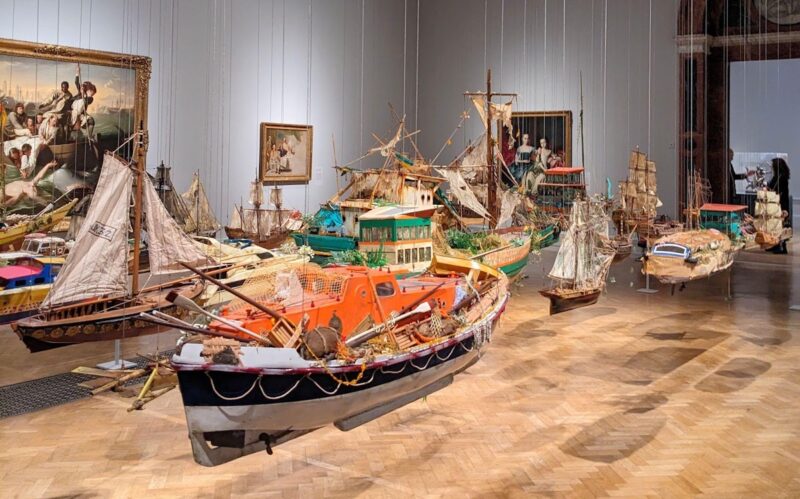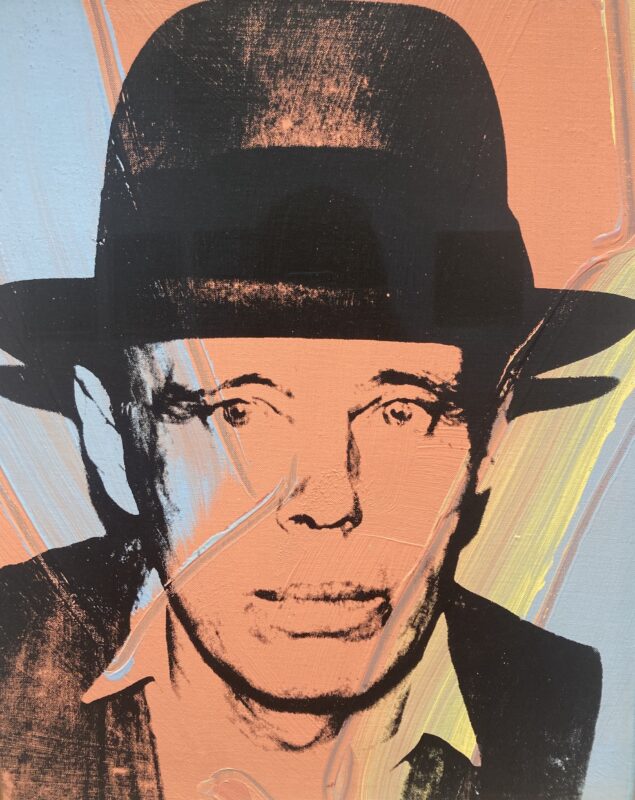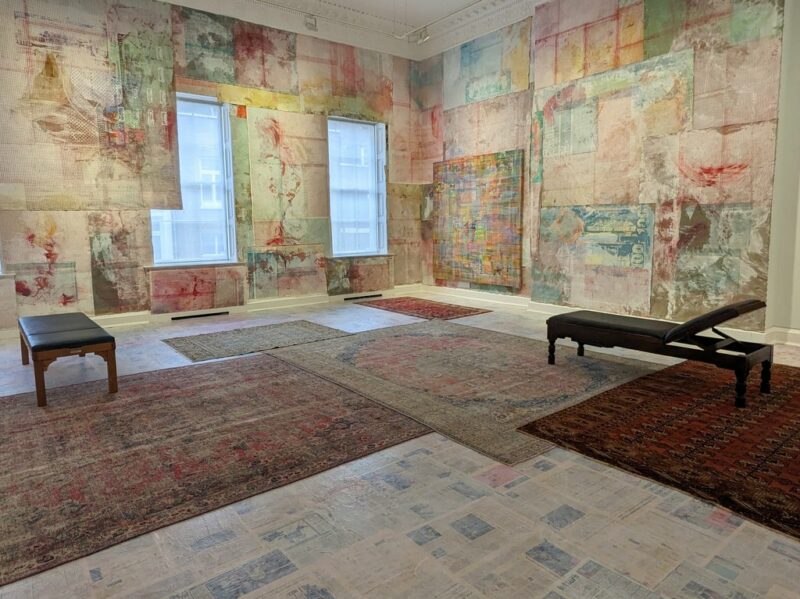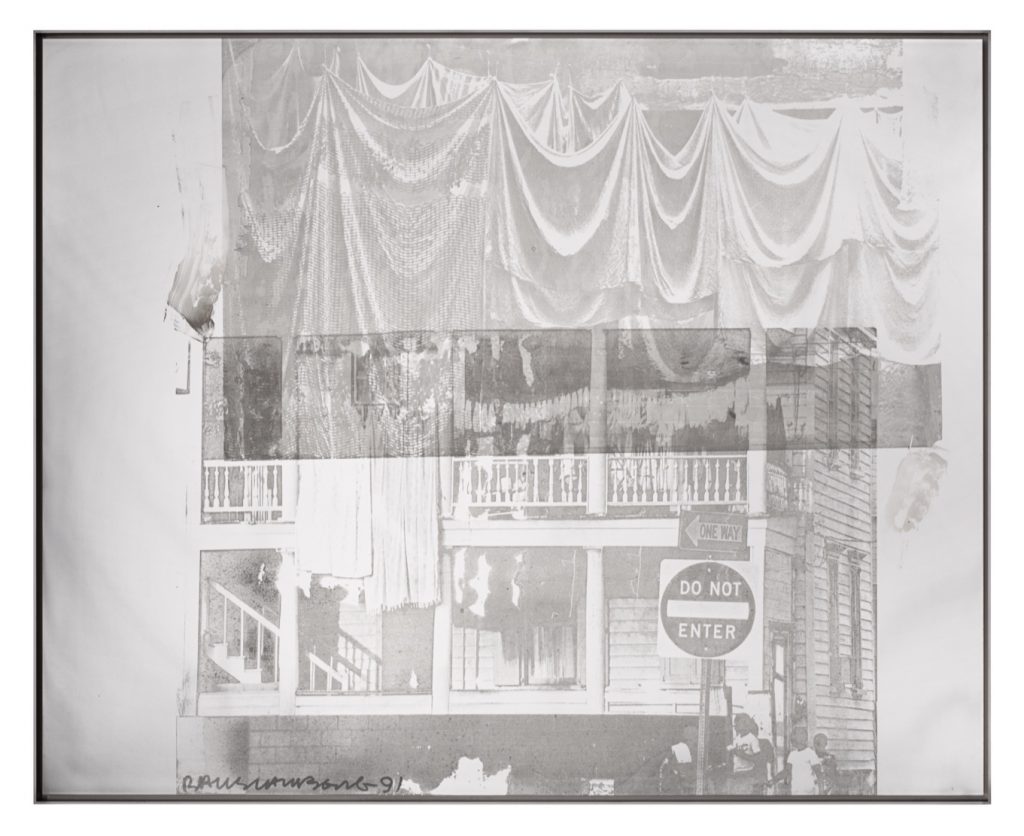
Thaddaeus Ropac London is to present an exhibition of Robert Rauschenberg’s Night Shades and Phantoms from 1991, two series of metal paintings composed of silk-screened photographic images and gestural strokes on aluminium supports. Made during his decade-long experimentations with metal, these paintings are characterised by their grayscale pale e, which ranges from the Night Shades’ painterly chiaroscuro to the Phantoms’ mirrored surfaces and ethereal translucency.
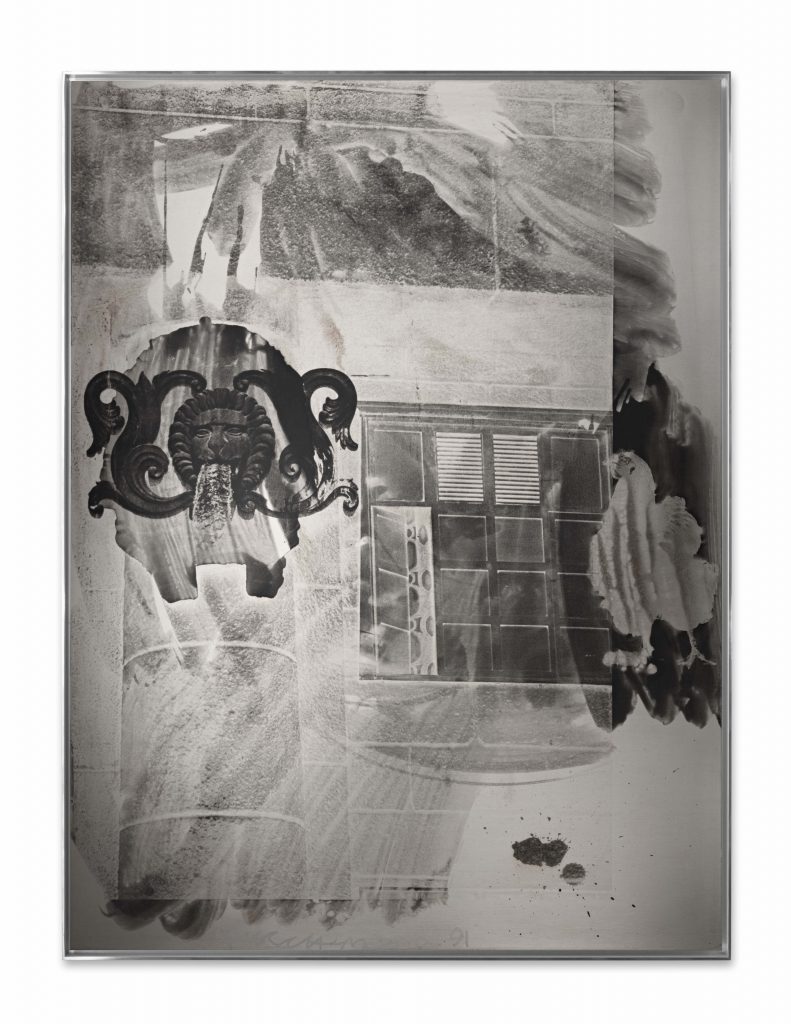
Robert Rauschenberg Egyptian Chick (Night Shade), 1991 Tarnish and silkscreen ink on brushed aluminium 121,9 x 91,4 cm (48 x 36 in) (RR 1190) © Robert Rauschenberg Foundation/Licensed by Adagp, Paris, 2020. Photo: Glenn Steigemann
Rauschenberg creates dream-like imagery which appears and disappears as a result of light, shadows and reflections across the artworks’ surfaces. The works respond to their surroundings, playing with the viewer’s perception and bringing the world into the paintings, recalling Rauschenberg’s famous maxim: ‘Painting relates to both art and life. Neither can be made.
(I try to act in the gap between the two.)’. Organised in collaboration with the Robert Rauschenberg Foundation, the exhibition will also present a selection of photographs by the artist used as source images for the paintings on view.
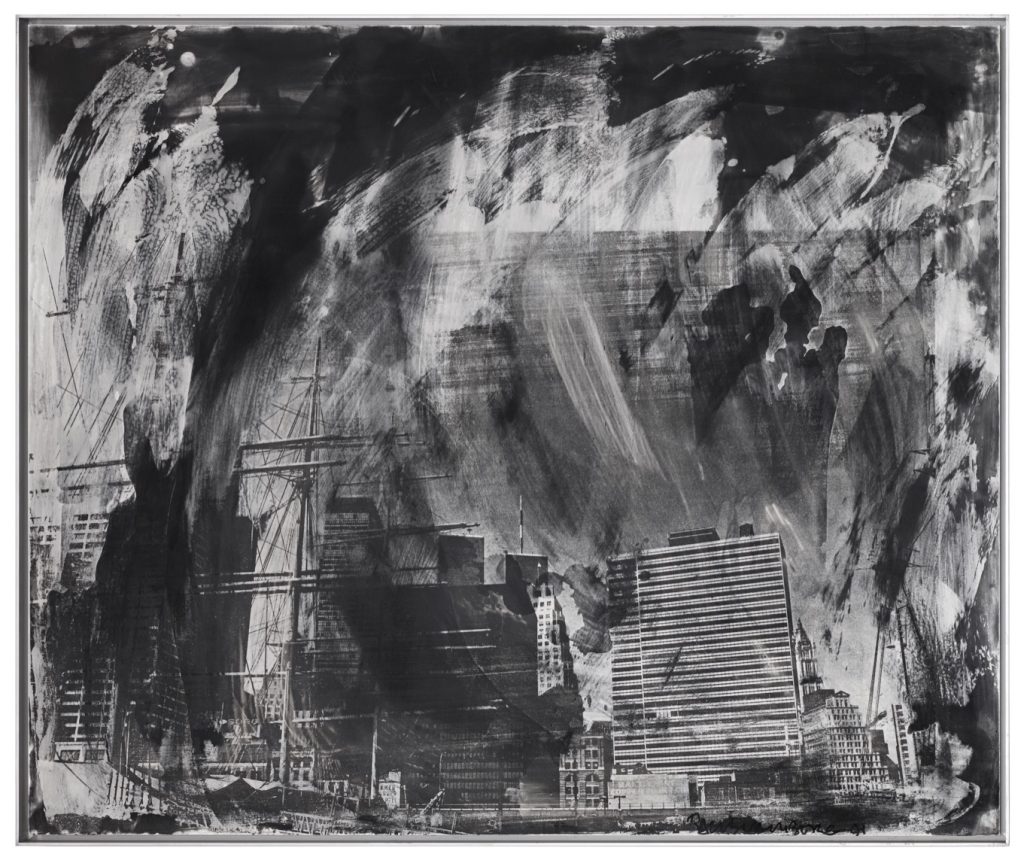
Robert Rauschenberg Portal (Night Shade), 1991 Tarnish and silkscreen ink on aluminium104,1 x 124,5 cm (41 x 49 in) (RR 1198) © Robert Rauschenberg Foundation/Licensed by Adagp, Paris, 2020. Photo: Glenn Steigemann
One of the most influential artists of the twentieth century, Rauschenberg revolutionised the picture plane by bringing together painting, photography and sculpture in a highly inventive way. From the mid-1980s onwards, following his sojourn in Chile, he swapped canvas for sheets of first copper, then brass, bronze and in the case of the Night Shades and Phantoms, brushed and mirrored aluminium. Rauschenberg’s use of metal can be traced back to his earlier sculptural assemblages made with industrial waste and scrap metal, as in his Elemental Sculptures (1953/59), as well as in his Combines (1954–64) and his later Gluts (1986–89/1991–94). In the Night Shades and Phantoms, Rauschenberg used metal as a pictorial device that references the reality of an industrialised world while also serving as a reflective surface that captures images, impressions and memories.
For the Night Shades, Rauschenberg silkscreened images onto mirrored or brushed aluminium, applying a tarnish called Aluma Black with gestural strokes. At times the images are obscured by the tarnish, leaving expressive spills of black; at others, Rauschenberg mixed varnish with pigments that resist the tarnish and further enhance the works’ painterly qualities. For the Phantoms, Rauschenberg experimented with a different type of metal – mirrored, anodised aluminium – which repelled the tarnish, producing spectral images that appear or disappear according to one’s viewpoint. Therefore, the Phantoms developed from the Night Shades as an almost ghostly double.
Their title alludes to their phantasmagoric effect, while the term Night Shades refers to a poisonous plant that bears dark berries; as a compound word it also suggests twilight or a curtain falling.
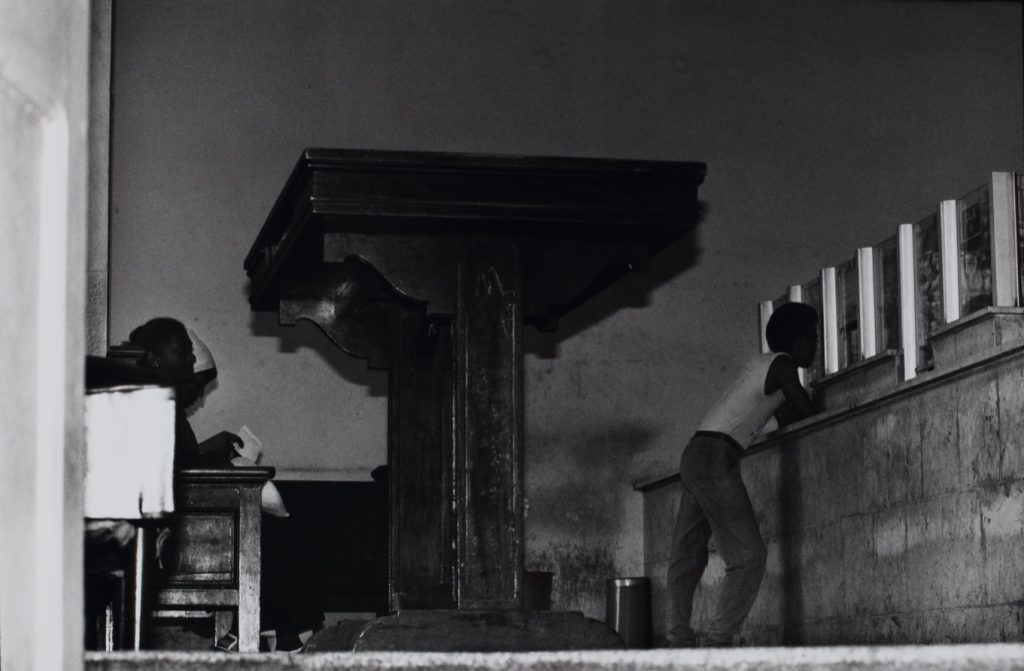
Robert Rauschenberg Cuba, 1987 Gelatin silver print 33 x 48,3 cm (13 x 19 in) Frame 57,3 x 72,4 x 3,4 cm (22,56 x 28,5 x 1,34 in) (RR 1202) © Robert Rauschenberg Foundation/Licensed by Adagp, Paris, 2020.
The images used in the silkscreening process are Rauschenberg’s own photographs, taken during his various trips across the United States and abroad between 1979 and 1991, including his travels for the Rauschenberg Overseas Culture Interchange (ROCI) project (1984–91), which aimed to achieve mutual understanding between different cultures across the globe through creative exchanges.
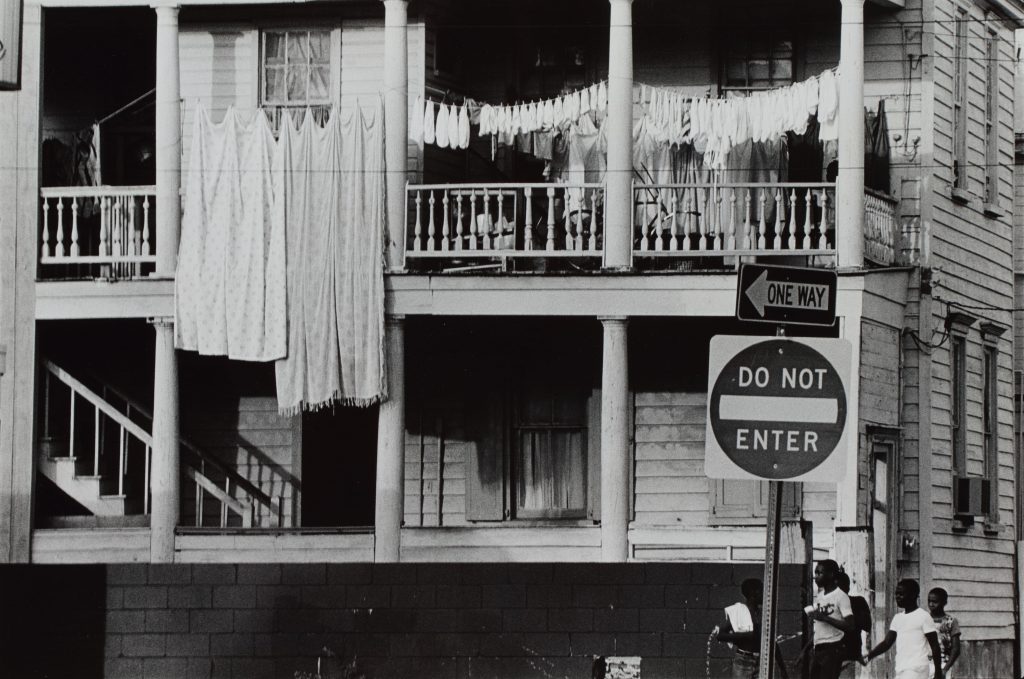
Robert Rauschenberg Charleston, South Carolina, 1980 Gelatin silver print
33 x 48,3 cm (13 x 19 in) Frame 57,3 x 72,4 x 3,4 cm (22,56 x 28,5 x 1,34 in)
(RR 1207) © Robert Rauschenberg Foundation/Licensed by Adagp, Paris, 2020.
By bringing together disparate elements from a variety of sources and locations within the same picture plane, Rauschenberg communicates a desire for interconnectedness. The elements are combined in compositions that are poetic and wi y, encouraging the viewer to create their own associations between images and words. The iconography is extremely rich and varied. Snapshots of urban life as well as historical and cultural artefacts such as the Berlin Wall or a temple in Malaysia, are juxtaposed with images of trees, plants and fauna, and at times combined with gestural marks that emphasise a sense of vitality and movement. And yet, the images can be difficult to grasp, their evanescence and layering also suggesting the elusiveness of memory.
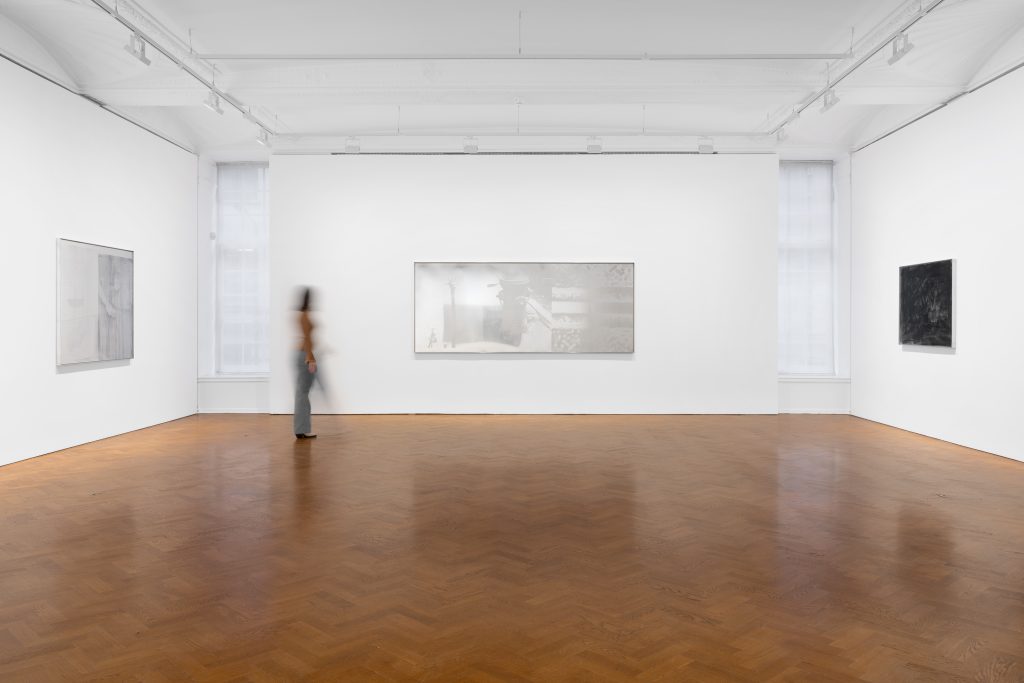
In the catalogue accompanying the exhibition, artist David Salle writes: ‘Rauschenberg knew how to let forms and masses invade and a ect each other, energising the surface to build a sense of pictorial consequence, itself part of something larger, deeper. What that something is exactly is hard to name, but it imbues the experience of looking with a sense of li , of experience in motion, alo .’
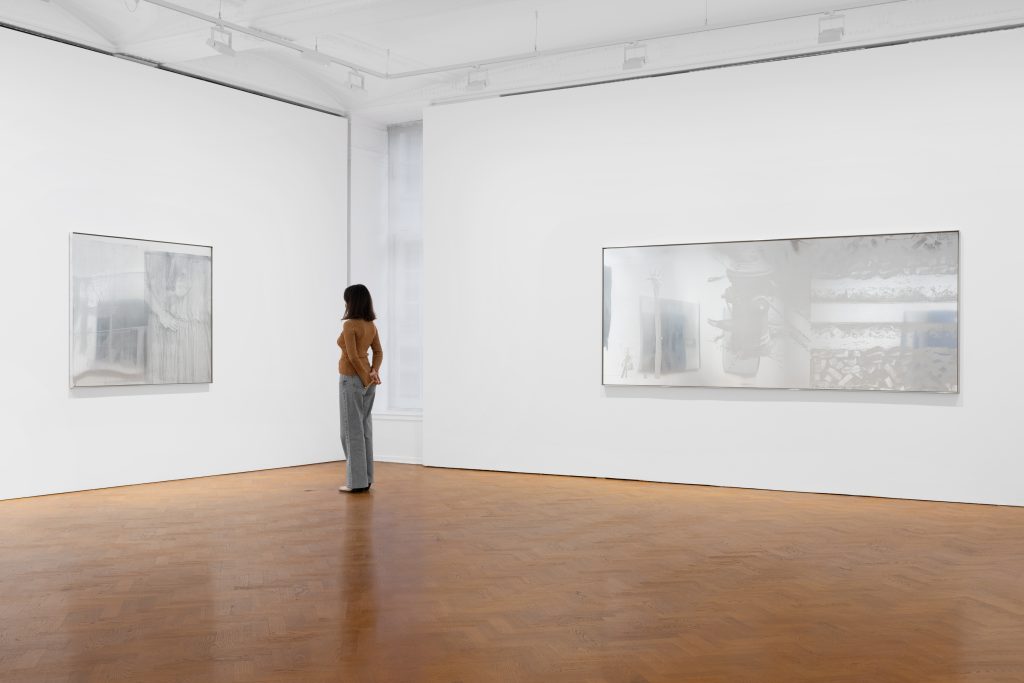
Rauschenberg’s process of incorporating his own photographs of past impressions and experiences also suggests a self-reflective and retrospective approach. It is perhaps not a coincidence that in 1991, the same year the Night Shades and Phantoms were made, Rauschenberg was the subject of major exhibitions spanning his career, presented at the Whitney Museum of American Art, New York; the National Gallery of Art, Washin on, D.C; and the Menil Collection, Houston. Recent retrospectives of his work were held at Tate Modern, London (2016), The Museum of Modern Art, New York (2017), and the San Francisco Museum of Modern Art (2017).
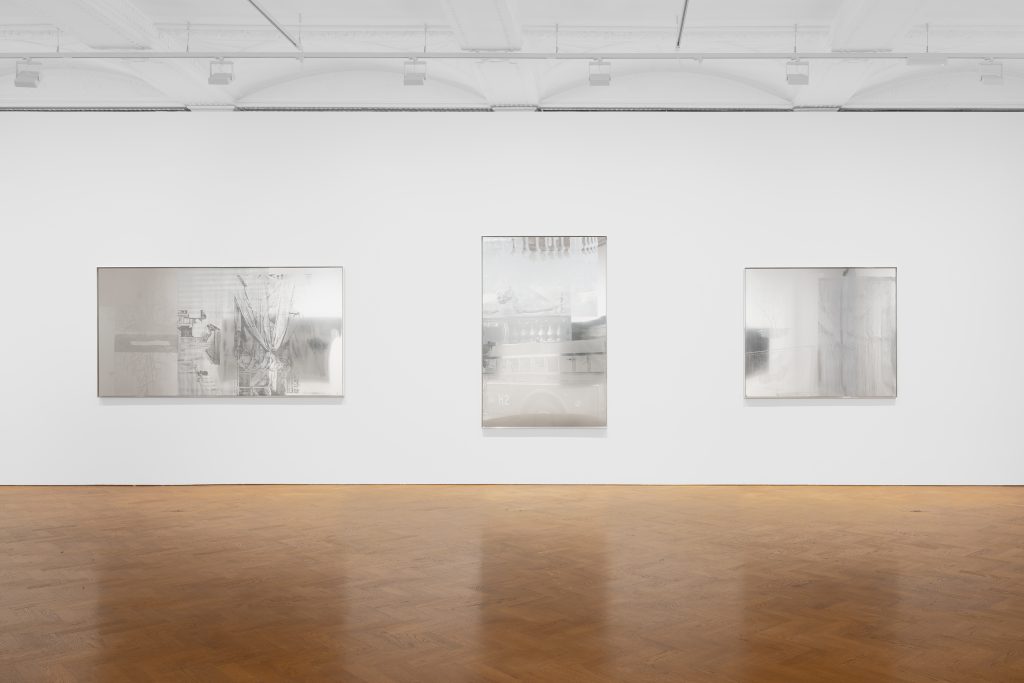
The exhibition is accompanied by a fully illustrated catalogue with an essay by artist David Salle and author Sarah French.
Robert Rauschenberg’s Night Shades and Phantoms opening April 13th at Thaddeaus Ropac London ropac.net
About the artist
Over the course of his sixty-year career, American artist Robert Rauschenberg (1925–2008) was in- spired by wide-ranging experiences, collaborations, and a spirit of experimentation with new materi- als and techniques. Although he demurred a iliation with any specific movement, he has been identi- fied as a forerunner of practically every post-war artistic development since Ab- stract Expressionism.
Rauschenberg a ended the Kansas City Art Institute and later the Académie Julian in Paris, but the young artist’s most profound formative experience was at the experimental Black Mountain College in North Carolina, where he enrolled in 1948 alongside fellow artist and future wife Susan Weil. There he studied under painter and Bauhaus educator Josef Albers and met composer John Cage and choreographer Merce Cunningham, who became longstanding friends and artistic collaborators. The trio participated in Theatre Piece #1 (1952), a multimedia performance—now recognised as the first ‘Happening—’that incorporated poetry, music, dance and film, as well as Rauschenberg’s White Paintings (1951) suspended from the ceiling. Cage memorably described the White Paintings as ‘airports for the lights, shadows and particles’ that ‘caught whatever fell on them’, citing them as an inspiration for his composition 4’33’’ (1952), which creates a framework that prompts a heightened awareness of ambient sound.
By the end of 1953, Rauschenberg had begun integrating a litany of found materials and objects into his Red Paintings (1953–54), which evolved into his seminal Combines. Incorporating everything from a taxidermy goat to street signs and bed quilts, these works obliterated the boundary between painting and sculpture, introducing a new relationship between viewer and artwork. In 1962 Rauschenberg began making paintings that combined gestural brushwork with silkscreened imagery drawn from newspapers, magazines and his own photographs. Following his first retrospective, organised by the Jewish Museum, New York in 1963, Rauschenberg was awarded the International Grand Prize in Painting at the Venice Biennale in 1964.
Rauschenberg’s work throughout the subsequent decades embodied his lifelong commitment to collaboration with performers, artisans and engineers worldwide. As well as designing lighting, sets and costumes for avant-garde productions by Merce Cunningham, Trisha Brown and Paul Taylor, among others, Rauschenberg also choreographed his own performances, beginning with Pelican in 1963. He co-founded Experiments in Art and Technology (E.A.T.) with engineer Billy Klüver, which aimed to pair artists and engineers for collaborative projects. Together with Klüver, Rauschenberg created works like Oracle (1962–65), which incorporated wireless transistor radio technology, and the responsive light installation Soundings (1968).
In 1970, Rauschenberg established his permanent home in Captiva Island, Florida, where he created several series of works focused on materiality, including the Cardboards (1971–72), wall sculptures created from discarded boxes, and the silken Jammers (1975–76). His experimentation with printing techniques also continued across a range of media, including the fabric solvent-transfer Hoarfrosts (1974–76), multimedia Spreads (1975–83) and his metal works from the 1980s–90s, including the Shiners, Urban Bourbons, Borealis, Night Shades and Phantoms.
In addition to his own artmaking practice, Rauschenberg became a spokesperson for artists and the creative community at large. In September 1970, he founded Change, Inc., a non-profit organisation that helped artists with emergency expenses and from 1984–91, he personally funded the Rauschenberg Overseas Culture Interchange (ROCI) project. For this extensive touring program, Rauschenberg travelled to ten countries – Mexico, Chile, Venezuela, China, Tibet, Japan, Cuba, the USSR, Germany and Malaysia – with the aim of sparking cross-cultural dialogue and understanding through the creative process.

